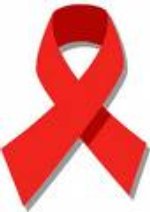HIV treatment, injection drug use, and illicit drug policies
Source: The Lancet
Vol 370 July 7, 2007
The global over-reliance on criminal justice approaches to illicit drug
use is putting the lives of injection drug users (IDUs) at risk. This
policy approach severely undermines HIV-prevention efforts,(1) and the
effects may be even worse for HIV-infected IDUs, because criminal
justice strategies interfere with IDUs’ ability to access and remain
successfully engaged in HIV-treatment programmes.
The HIV crisis has transitioned from an epidemic driven mainly by sexual
transmission to one in which syringe-sharing by IDUs contributes to a
substantial proportion of new infections. UNAIDS estimates that a third
of new HIV infections outside sub-Saharan Africa are attributable to IDUs.(2) In North America, IDUs account for about one in four cases of HIV, and in some areas where HIV is spreading most rapidly, such as eastern Europe and central Asia, more than 80% of all HIV cases occur in IDUs.(2) As this epidemic matures, increasing numbers of IDUs need highly active antiretroviral therapy (HAART).(3) Whilst ongoing illicit drug use can create substantial challenges in the delivery of care, by using innovative programmes, IDUs can derive full benefit from HAART.(4)
Unfortunately, there is a growing body of evidence indicating that IDUs
are being left behind in the global effort to scale up HAART. For
instance, despite the high proportion of HIV cases in IDUs in eastern
Europe and central Asia, less than 15% of patients receiving HAART are
current or former IDUs.(3)
We must therefore identify and remove structural barriers and policies
that hinder the best prevention and treatment practices for IDUs. The
predominant response to the IDU epidemic today continues to rely on
criminal justice approaches aimed at controlling the supply
and use of illegal drugs.(5) This remains the case despite overwhelming
evidence showing the limited efficacy of this approach(6) and, more
importantly, despite the substantial evidence indicating that
criminalisation leads to social marginalisation of IDUs, which
compromises their access to health-care services, including HIV care.(7)
Specifically, law enforcement activities interrupt the delivery of HIV
services,(1) and incarceration of IDUs increases risk behaviours for HIV
and can promote interruption of HIV treatment.(8)
Efforts to promote evidence-based approaches to facilitate IDUs’ access
to health care, including HIV care, continue to be undermined by
policymakers. Despite objective evidence in support, several
well-studied approaches remain banned or severely restricted in
many areas of the world. Among these are methadonemaintenance therapy, needle exchanges, and supervised injecting facilities.(4,9) Political leaders in the developed world carry a disproportionate part of the blame, because they validate the dismissal of vidence-based approaches with their actions. Such has been the case with the dogmatic drug policies of the USA under President George W Bush.(6) More recently, Australia’s Prime Minister, John Howard, has also embraced ideological rather than evidence-based approaches.(10)
Similarly, Canada’s Prime Minister, Stephen Harper, has embarked on a
renewed USA-inspired ideological attack on evidence-based responses to HIV for IDUs.(11) Despite obvious short-comings, these non-scientific
approaches inspired by law enforcement are further entrenched by some
international agencies.(12)
Later in July, the 4th International AIDS Society Conference on
Pathogenesis, Treatment and Prevention gathers in Sydney, Australia, to
discuss the latest scientific results in the fight against HIV/AIDS.
This is a fight in which, despite many breakthroughs, our advances
continue to be outstripped by the increase in new infections. Therefore
the successful expansion of HIV treatment and prevention for IDUs will
require the implementation of evidence-based drug-policy approaches and a greater recognition by international public-health agencies of the
limited effectiveness and negative consequences of over-reliance on
criminal justice approaches to address injection drug use.
Future generations will judge us harshly for failing to implement our
breakthroughs. Among the areas where this is most painfully evident is
the global response to the HIV epidemic in IDUs, particularly because it
relates to halting the spread of HIV and promoting access to
health care within this vulnerable population.
Evan Wood, Thomas Kerr, Julio S G Montaner
British Columbia Centre for Excellence in HIV/AIDS, St Paul’s Hospital,
Providence Health Care, Vancouver, BC, Canada V6Z 1Y6;
and Department of Medicine, Faculty of Medicine, University of British
Columbia, BC, Canada. jmontaner@cfenet.ubc.ca
We thank Deborah Graham, Glen Edwards, Peter Vann, Michaela Montaner, and Kelly Hsu for their editorial and technical assistance. TK is
supported by a Canadian Institutes of Health Research New Investigator
Award and a Michael Smith Foundation for Health Research Scholar Award.
JM has received educational grants from, served as an ad-hoc adviser to,
or spoken at events for: Abbott Laboratories, Agouron Pharmaceuticals
Inc, Boehringer Ingelheim Pharmaceuticals Inc, Borean Pharma AS,
Bristol-Myers Squibb, DuPont Pharma, Gilead Sciences, GlaxoSmithKline,
Hoffmann-La Roche, Immune Response Corporation, Incyte, Janssen-Ortho Inc, Kucera Pharmaceutical Company, Merck Frosst Laboratories, Pfi zer Canada Inc, Sanofi Pasteur, Shire Biochem Inc, Tibotec Pharmaceuticals Ltd, and Trimeris Inc.
EW and TK declare that they have no confl ict of
interest.
1 Davis CS, Burris S, Kraut-Becher J, Lynch KG, Metzger D. Eff ects of
an intensive street-level police intervention on syringe exchange
program use in Philadelphia, PA. Am J Public Health 2005; 95: 233–36.
2 UNAIDS. 2006 report on the global AIDS epidemic. May, 2006. (accessed Sept 15, 2006).
3 Aceijas C, Oppenheimer E, Stimson GV, Ashcroft RE, Matic S, Hickman M.
Antiretroviral treatment for injecting drug users in developing and
transitional countries 1 year before the end of the “Treating 3 million
by 2005. Making it happen. The WHO strategy” (“3 by 5”). Addiction 2006; 101: 1246–53.
4 Kerr T, Wodak A, Elliot R, Montaner JS, Wood E. Opioid substitution
therapy and HIV/AIDS treatment and prevention. Lancet 2004; 364: 1918–19.
5 Des Jarlais DC, Friedman SR. Fifteen years of research on preventing
HIV infection among injecting drug users: what we have learned, what we have not learned, what we have done, what we have not done. Public Health Rep 1998; 113 (suppl 1): 182–88.
6 The Lancet. Losing tolerance with zero tolerance. Lancet 2005; 365:
629–30.
7 Grund JP, Blanken P, Adriaans NF, Kaplan CD, Barendregt C, Meeuwsen M. Reaching the unreached: targeting hidden IDU populations with clean
needles via known user groups. J Psychoactive Drugs 1992; 24: 41–17.
8 Wood E, Montaner J, Kerr T. HIV risks in incarcerated injection-drug
users. Lancet 2005; 366: 1834–35.
9 Mattick RP, Breen C, Kimber J, Davoli M. Methadone maintenance therapy versus no opioid replacement therapy for opioid dependence. Cochrane Database Syst Rev 2003; 2: CD002209.
10 Swan N. Drug doings Down Under. JAMA 1999; 281: 1782–83.
11 Wainberg MA. The need to promote public health in the field of
illicit drug use. CMAJ 2006; 175: 1395.
12 Small D, Drucker E. Closed to reason: time for accountability for the
International Narcotic Control Board. Harm Reduct J 2007; 4: 13.




 Creative Commons Attribution
Creative Commons Attribution